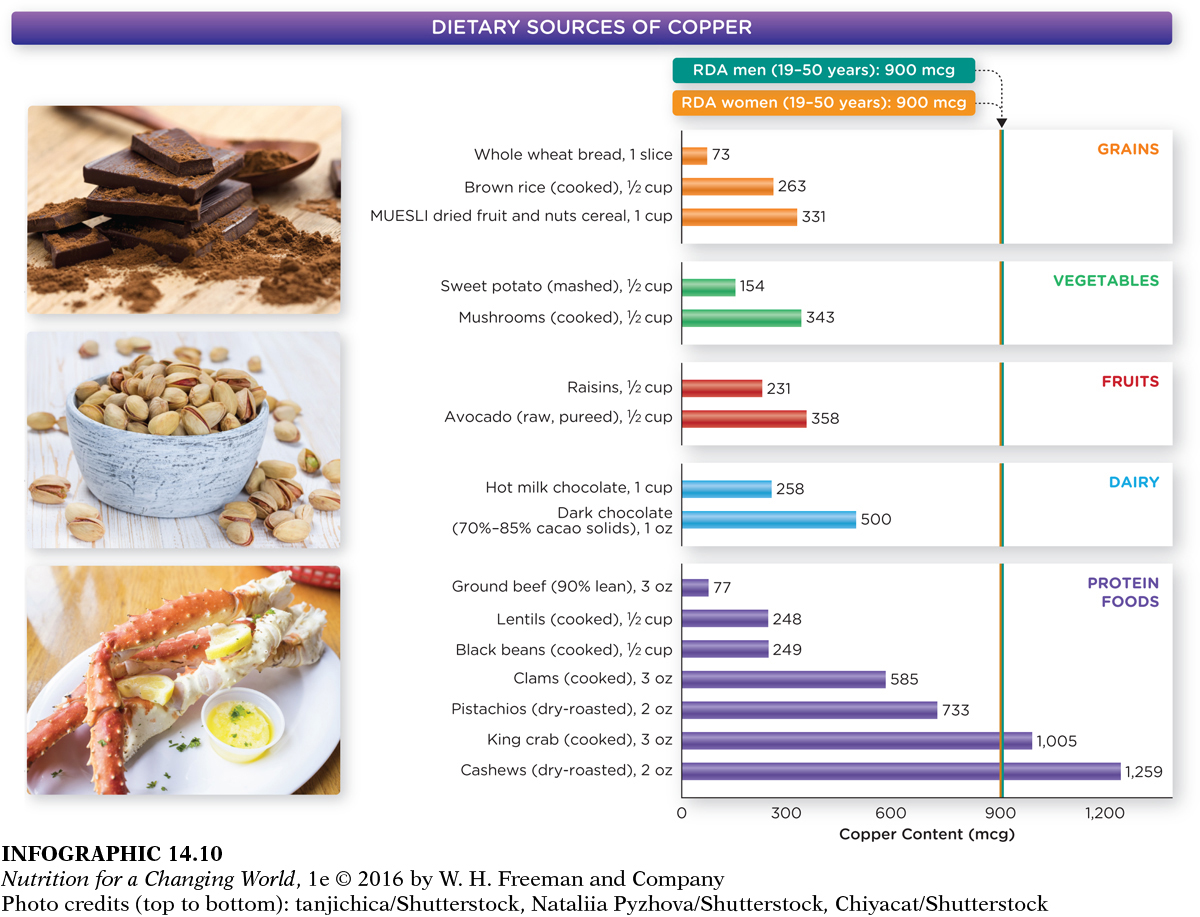COPPER
Copper (Cu) is a mineral perhaps more familiar to us for its use in cookware, wire, and even jewelry than as a nutrient. However, copper functions as a co-
Deficiencies of copper from low dietary intakes are rare in the United States as most of the population meets or exceeds the RDA for copper. However, deficiencies that are secondary to other factors are more common. Copper deficiencies are somewhat common in people who have gastric bypass surgery to treat obesity, as well as in those with other conditions that cause nutrient malabsorption. Excessive zinc intake decreases copper absorption and is another cause of copper deficiency. One of the most common copper deficiency symptoms highlights another important mineral-
The RDA for copper is 900 micrograms per day in adults. Approximately 55% to 75% of dietary copper is absorbed, which is much more efficient than other trace minerals. Although copper is found in a wide variety of foods, it is highest in organ meats, shellfish, nuts, seeds, mushrooms, chocolate, and legumes. (INFOGRAPHIC 14.10)
